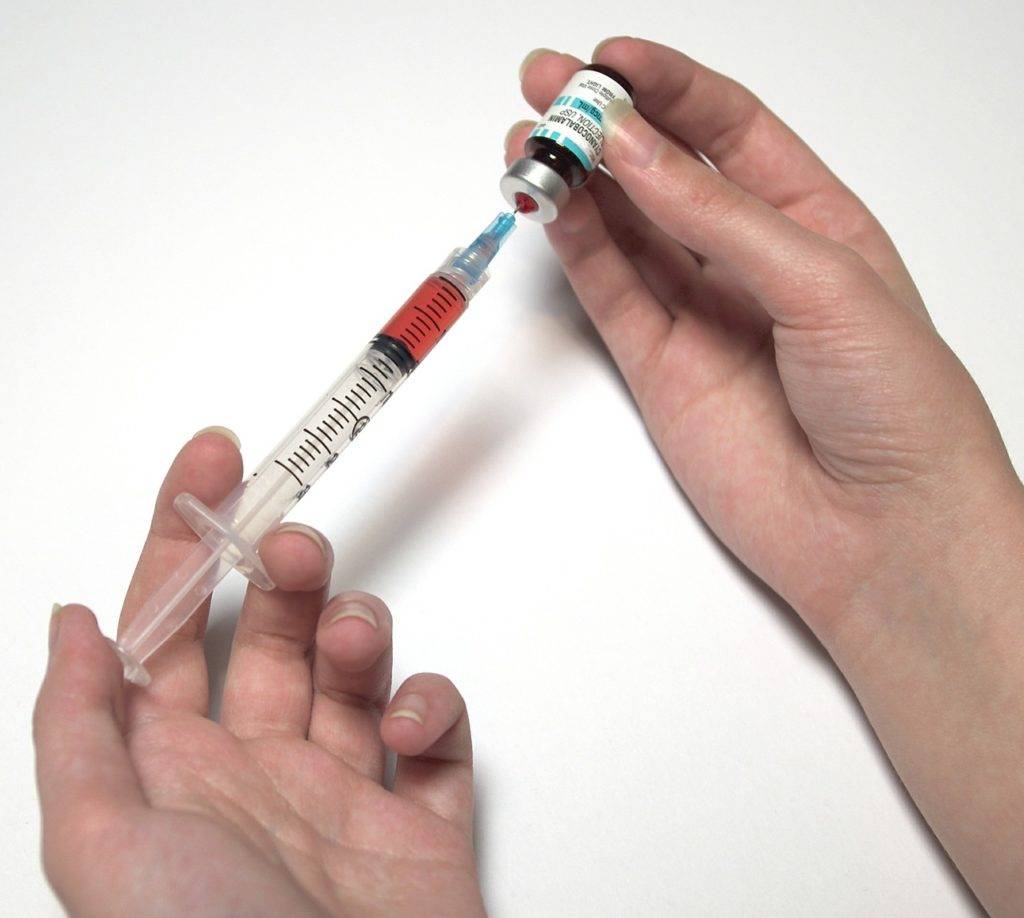 Bringing a new baby into the world should be one of the happiest moments in a family’s life. But when mom is positive for hepatitis B (HBV), the story changes. Will my baby be infected? Will they have a normal life? What can be done to prevent this?
Bringing a new baby into the world should be one of the happiest moments in a family’s life. But when mom is positive for hepatitis B (HBV), the story changes. Will my baby be infected? Will they have a normal life? What can be done to prevent this?
Without proper protection, the baby can become infected at birth and carry the disease for life. Here’s the reassuring truth: with the right care, most babies can be fully protected. In hospitals with the right resources, babies of HBV-positive moms can almost always be protected.
The key is timely care at birth and strong follow-up. This matters more than ever today, because global migration has brought more HBV-positive mothers into OECD countries, where perinatal prevention programs must be vigilant. Hospitals in the United States and other countries face new challenges.
Many expectant mothers arrive from regions where hepatitis B is common. Top hospitals must step up, follow clear medical guidelines, and ensure no baby slips through the cracks. Let’s explore why—and how these steps protect the next generation. This blog will explain:
- What Hepatitis B is and why it matters for newborns
- How mothers can unknowingly pass it to their babies
- What hospitals must do to keep infants safe
- Why migration and global travel make this issue urgent right now
- What families can ask and expect when delivering at a hospital
What Is Hepatitis B and Why Is It Dangerous for Newborns?
Hepatitis B (HBV) is a virus that attacks the liver. Many adults who catch it fight it off within months. But for babies, it’s different. When a baby is infected at birth, the virus usually stays in their body for life. Doctors call this chronic hepatitis B. Over the years, it can lead to liver damage, cancer, and even death.
Here’s the scary part—that’s why prevention is so critical.
- 90% of babies infected at birth will become chronic carriers.
- Without protection, the baby’s immune system can’t fight back effectively.
Why Hepatitis B in Pregnancy Is a Big Deal
- HBV is common worldwide. Hundreds of millions of people live with chronic HBV, and many don’t know it.
- Babies are at the highest risk. If exposed at birth, up to 90% of babies develop lifelong infection.
- Lifelong risks are deadly. Chronic infection can lead to cirrhosis, liver cancer, and early death.
But here’s the good news: with screening, timely shots, and follow-up testing, almost all babies can avoid infection.
How Hepatitis B Passes From Mother to Baby
A mom with Hepatitis B may feel perfectly healthy. She might not even know she’s infected. However, during childbirth, blood and body fluids can transmit the virus to the baby. Doctors call this mother-to-child transmission. The biggest risk happens at the moment of delivery. Other important facts:
- Breastfeeding is safe if the baby is protected at birth.
- Infection during pregnancy is rare, but the risk at delivery is high.
- Babies who get the right protection at birth have a 95% chance of staying virus-free.
The Critical First 12 Hours—Hospitals Must Act Fast
Time is everything. If a newborn is exposed to hepatitis B, doctors have only a small window to protect them. The first 12 hours after birth are crucial. Hospitals must give the baby:
- Hepatitis B vaccine (the first dose in a series)
- Hepatitis B Immune Globulin (HBIG)—a special antibody shot that gives instant protection
Together, these shots give the newborn’s body both immediate defense and long-term immunity. Miss this window, and the baby’s risk of lifelong infection skyrockets.
Gold-Standard Care in Well-Resourced Hospitals
Every hospital should have a clear plan to protect babies when moms test positive for hepatitis B. Here’s what that plan looks like:
Step 1: Universal Prenatal Screening
Early in pregnancy, screening for HBV should be performed. In many OECD countries, this is standard. This way, doctors know who needs special care. The test checks for HBsAg—a marker of infection. Some clinics also use a triple panel to identify infection, immunity, or past exposure.
If a mom wasn’t tested before, hospitals must check her status when she arrives to deliver.
Step 2: Antivirals for Moms With High Viral Loads
If a mom’s HBV DNA (viral load) is very high, doctors prescribe tenofovir in the third trimester to reduce transmission risk. This is in addition to newborn shots.
Step 3: Delivery Room Protection Within 12 Hours
- If mom is HBsAg-positive: Baby must receive HBIG (hepatitis B immune globulin) and the first dose of hepatitis B vaccine within 12 hours.
- All other babies: Still get the birth dose within 24 hours.
Step 4: Complete the Vaccine Series
The baby should receive the full series:
- First shot at birth
- Second shot at 1–2 months
- Third shot at 6 months
Hospitals should guide families through this journey and connect them with trusted pediatric care.
Step 5: Post-Vaccination Testing
At 9–12 months, the baby gets a blood test to confirm protection and rule out infection. Only then can the case be “closed.”
👉 Learn more about the importance of newborn care in this helpful guide: 10 Essential Reasons to Visit Your Pediatrician After Bringing Home Your New Baby
Why Migration Makes This an Urgent Issue
Movement of people means movement of health risks. Families move from regions where HBV is common (Asia, Africa, and Eastern Europe) to OECD countries. The US is home to millions of immigrants from regions where hepatitis B is much more common. Some key facts:
- In the US, less than 1% of the general population has Hepatitis B.
- In certain countries, up to 10% of adults may carry the virus.
- Many people don’t know they have it, since symptoms can stay hidden for years.
- Pregnant women may not know their status. Without screening, HBV can go undetected.
- Hospitals must adapt. They need interpreters, culturally sensitive counseling, and strong coordination with public health to protect babies in migrant families.
This means maternity wards in major US cities often deliver babies whose mothers may be infected. Without proper care, the cycle of infection continues. Hospitals in immigrant-rich communities must stay alert and make Hepatitis B protection a top priority.
The Role of Public Health Surveillance
Even after discharge, public health programs track these babies. In the U.S., Perinatal Hepatitis B Prevention Programs (PHBPP) ensure:
- Hospitals gave HBIG + vaccine on time.
- Babies finish the vaccine series.
- Babies receive follow-up testing at 9–12 months.
- Families who move don’t “fall through the cracks”—cases are transferred to new health departments.
This “identify → protect → verify” loop is why perinatal HBV transmission rates are dropping in well-resourced countries.
Common Mistakes Hospitals Must Avoid
Even the best hospitals sometimes fall short when it comes to protecting babies from Hepatitis B. While protocols exist, real-world mistakes can slip through—and when they do, the consequences for a newborn can last a lifetime.
Parents, doctors, and hospital administrators must all recognize these dangers and work together to eliminate them. Here are some of the most serious and common mistakes hospitals must avoid:
1. Delays in Giving the Vaccine and HBIG
Timing is everything. The Hepatitis B vaccine and HBIG (Hepatitis B Immune Globulin) must be given within the first 12 hours after birth.
- What can go wrong? A busy delivery ward, staff shortages, or confusion about the baby’s Hepatitis B risk can cause dangerous delays.
- Why it matters: If the shots are given late—even just by a few hours—the baby’s protection drops dramatically.
- Best practice: Top hospitals store vaccines and HBIG in delivery units and train staff to act immediately after birth.
2. Mothers Not Tested for Hepatitis B During Pregnancy
Universal screening of all pregnant women is the cornerstone of prevention.
- What can go wrong? Sometimes a mother isn’t tested at all, or her results aren’t recorded correctly in her medical chart.
- Why it matters: If doctors don’t know the mother has Hepatitis B, they won’t know the baby needs urgent protection.
- Best practice: Hospitals should repeat testing at delivery for mothers who don’t have clear results.
3. Incorrect Record-Keeping
Medical charts and vaccine records must be accurate. Unfortunately, errors are common.
- What can go wrong? A nurse might mark the vaccine as “given” when it wasn’t, or a baby could be confused with another infant in a busy nursery.
- Why it matters: Incorrect documentation can mean a baby leaves the hospital unprotected, and no one realizes it until it’s too late.
- Best practice: Hospitals use double-check systems—two staff members confirming each dose and recording it electronically—to prevent mistakes.
4. Running Out of HBIG Stock
HBIG is not a vaccine you can wait for—it must be available immediately when a hepatitis B-positive mother gives birth.
- What can go wrong? Smaller hospitals or rural facilities may not stock HBIG due to cost or storage challenges. Others may run out during high-demand periods.
- Why it matters: If HBIG isn’t on hand, even the best doctors can’t protect the baby. Delays in ordering or transferring medication can put the newborn at risk.
- Best practice: Hospitals should track HBIG inventory, have emergency backup stock, and coordinate with regional suppliers.
5. Poor Communication Between Hospital Teams
Sometimes the issue isn’t a lack of resources—it’s the lack of communication.
- What can go wrong? Obstetricians may know the mother is Hepatitis B positive, but the pediatric team doesn’t get the message in time.
- Why it matters: If the right information doesn’t reach the delivery team, the baby won’t get immediate protection.
- Best practice: Hospitals use electronic alerts in medical records, flagging Hepatitis B-positive mothers so every staff member sees the warning instantly.
6. Missing Follow-Up Care After Discharge
Protection doesn’t end with the first shot. Babies need their full vaccine series and follow-up testing.
- What can go wrong? If the hospital doesn’t set up a referral to a pediatrician, parents may not realize how critical those follow-ups are.
- Why it matters: Without the full vaccine series, a baby remains vulnerable.
- Best practice: Hospitals should connect families to pediatricians before discharge and explain the schedule clearly.
How Top Hospitals Prevent These Errors
The most reliable hospitals don’t just hope everything goes smoothly—they build safety nets into their systems. By making these steps routine, top hospitals ensure no baby falls through the cracks. This includes:
- Training staff regularly on Hepatitis B protocols
- Using electronic medical record alerts to flag high-risk moms
- Keeping extra doses of HBIG ready for emergencies
- Double-checking documentation with two staff members
- Assigning case managers or social workers to ensure follow-up
What Families Can Do to Protect Their Babies
Parents have power, too. Even if you’re not a medical expert, you can make sure your baby is safe. Here’s how:
- Ask About Hepatitis B Testing During Pregnancy: Make sure your doctor tests you early in pregnancy. If not, ask for the test right away.
- Remind the Delivery Team: When you go to the hospital, tell the team if you have Hepatitis B. Don’t assume it’s in your chart.
- Watch the Clock After Birth: Ask the nurse: Did my baby have the Hepatitis B vaccine? Did my baby get HBIG within 12 hours?
- Stay on Track With Shots: Will public health follow up to make sure my baby finishes the series and gets tested? Write down the vaccine schedule and mark it on your calendar. Protection only works if every shot is given.
👉 Parents can also find guidance on staying organized with child health at The Essential Guide to Well-Child Care Visits
Real Stories That Show Why It Matters
Doctors often share cases where prevention made the difference:
- A mother from China gave birth in a U.S. hospital. Because she tested positive during pregnancy, her baby got both shots within hours of birth. The baby tested negative for the virus one year later.
- In another case, a hospital forgot to order HBIG in time. The baby was given the vaccine but not the immunoglobulin. Sadly, that child developed chronic Hepatitis B.
These stories underline one lesson: fast action saves lives.
FAQ—Babies of Mothers With Hepatitis B
Q1: If I have hepatitis B, can my baby still be protected?
Yes. With HBIG + vaccine at birth, plus full series and follow-up testing, your baby can be fully protected.
Q2: Do I need a C-section to reduce transmission?
No. The delivery method does not change the risk when proper newborn protection is given.
Q3: Can I breastfeed if I have hepatitis B?
Yes—if your baby receives HBIG and the vaccine at birth. Breastfeeding is safe.
Q4: What if I move to another city or country after delivery?
Public health programs can transfer your baby’s case to ensure protection continues. Keep your records with you.
Q5: Why is the birth dose needed even if I test negative?
Because tests can miss late infections, or paperwork can be lost. Universal dosing protects every baby, every time.
Build a Safer Future for All Babies
Protecting babies from hepatitis B isn’t just a medical responsibility—it’s a promise to give every child the chance at a healthy life. Hospitals, parents, and communities must work together to keep that promise, especially in our ever-changing, interconnected world.
Preventing Hepatitis B at birth is one of the biggest public health success stories of our time. With the right hospital systems in place, nearly every baby can be protected. When hospitals follow the playbook—screening, antiviral use when needed, HBIG + vaccine at birth, full series, and testing—babies are protected.
But with migration increasing the number of HBV-positive mothers in OECD countries, vigilance is essential. Hospitals must not drop their guard. Public health surveillance ensures no baby is left behind. Every child deserves a healthy start in life, no matter where their parents come from.
Key Takeaways
- Hepatitis B can pass from mother to baby at birth.
- Without protection, most babies become lifelong carriers.
- The hepatitis B vaccine + HBIG within 12 hours of birth prevents infection in over 95% of cases.
- Top hospitals must screen, prepare, and act quickly.
- Migration makes this issue urgent because more moms may carry the virus without knowing.
- Families should ask questions, remind hospital staff, and track follow-up shots.



